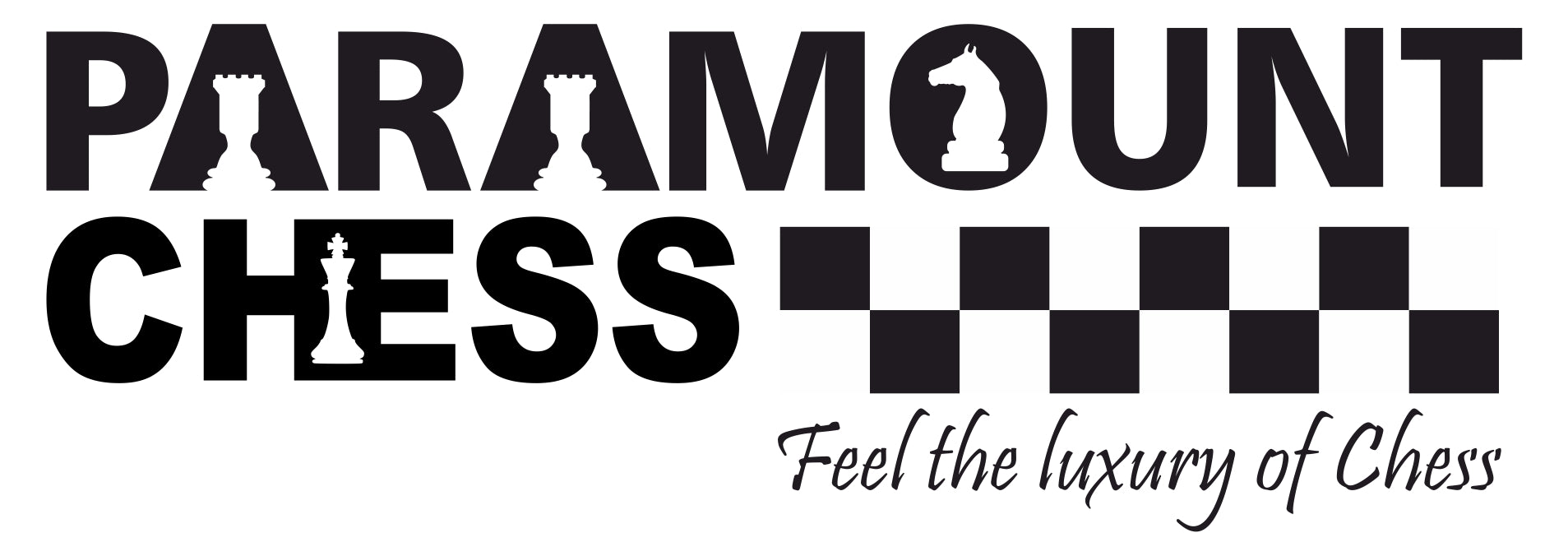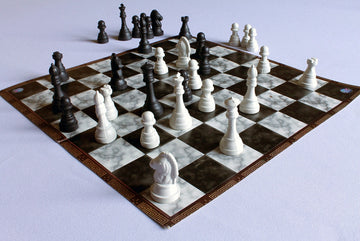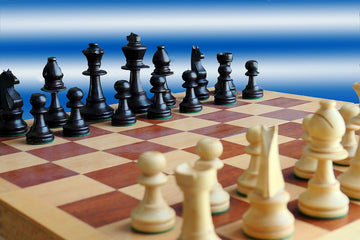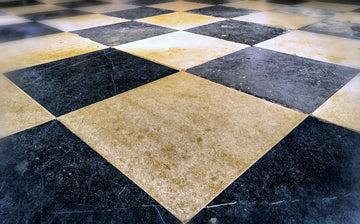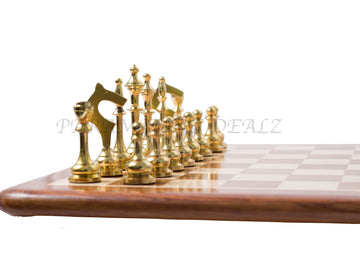

We all know chess was born in India from the game Chaturanga before 600 AD. Let's know more about the history of chess, In the 1500s it reached Western Europe, it derived into what we now know as chess. Spanish priest Ruy Lopez was one of the first masters of the chess game.
He did not invent the opening named on him; he considered it in a book he published in 1561. Chess theory was so basic then that Lopez recommended the strategy of playing with the sun in your enemy’s eyes!
Chess Theory and Development through the 19th century (history of chess)

Chess theory progress was at snail’s pace until the 18th century. The French Master Francois-Andre Philidor in 1749, walked onto the picture with his book named Analyse du jeu des Échecs. This book enclosed some new opening concepts in the history of chess and also involves Philidor's well-known defense in pawn and rook endgames – an endgame procedure that is still used today. Chess continued to achieve fame throughout the world, and standardization of chess sets arrived in the 19th century.
Jaques of London brought in a new style of pieces in 1849, which were created by Nathaniel Cooke. These same pieces were approved by Howard Staunton. This new style of pieces, recognized as the Staunton pattern, became immediately famous and was used in clubs and tournaments all over the world. The Staunton pieces, and inconsequential changes of it, are still said to be the standard for tournament chess sets.
The 19th century also decided the introduction of chess clocks to competitions. Before clocks became the benchmark, the game could last for 14hours. With the order of chess sets and the introduction of chess clocks, the material needed for modern matches and tournaments was set in place.
During the 1800s chess was developing itself. The most popular games of this time era were swashbuckling attacking games -strong protection ideas hadn't been learned yet. If a player was not sacrificing its pieces left and right trying to checkmate their enemy in a passionate manner, then it wasn't an entertaining game! It was during this attacking period in chess that the American player Paul Morphy arrived the picture.

Morphy was the symbol of all of these romantic and threatening attacking ideas. During his tour of Europe, Morphy accurately beat every major player in the world except Howard Staunton. Morphy motivated Louis Paulsen, Adolf Anderssen, Daniel Harrwitz, and other masters. the popular "Opera House" game was played by Morphy vs the allies in 1858, and is said to be one of the best games of all time.
The First World Champions and the Advent of Positional Chess
Wilhelm Steinitz concept about the game are still extensively felt today, especially his arrogance for aggressive play. He approved to obtain the prominently offered gambit pawn, and then closed the position down in order to grind out a success. Steinitz originally had no equal in this kind of positional play, and used it to turn into the first official world champion in 1886.

Steinitz won the title of world champion until 1894, when Emanuel Lasker accurately defeated him (10-5). Their rematch was held after three years later, was even more unbalanced: Lasker won by 10-2. Lasker would influence the title for 27 years, by far the longest tenure of any chess world champion.
Positional chess, as Steinitz and Lasker advertised, now became more and more famous. The predominant concept until about the 1920s was to take up the center of the board during the opening, usually with pawns. The most accepted openings were the Giuoco Piano, the Ruy Lopez, the French Defense, the Queen's Gambit, and the Four Knights' Game. These are almost quiet openings from which both sides slowly try to acquire small advantages in space, key squares, diagonals, and files.

Jose Raul Capablanca conquered Lasker in 1921 to turn into the third world champion. Capablanca's style is still said to be the essence of simple, clear-cut positional mastery. He contributed to avoid complex diplomatic situations, and instead would catch a seemingly small benefit that he would disciple in the endgame. His endgame technique was treated the greatest the world had ever seen. Even today, the best chess engines find very few mstakes in Capablanca's endgame skill. Although he only held the name of world champion for 6 years, Capablanca is still treated to be one of the extreme players of all time.
In the 1920s, a new school of hope entered the finest level chess - hypermodernism. The main intention is to regulate the center with minor pieces instead of hardly filling it with pawns. These new objectives were displayed in the games and concepts of a new generation of leading talent: Efim Bogolyubov, Aron Nimzovich, Ernst Grunfeld, and Richard Reti.
In this era, new openings and development schemes were designed in many famous openings, like the Grunfeld, Indian Defenses and the Benoni.
Perhaps Alekhine's Defense is the most hypermodern of all openings. The idea of this defense is to attract white to accelerate his central pawns, and later capture the overextended center.
Today Alekhine is remembered as the first dynamic style player not much as a hypermodern player, but - he could play very diplomatically and aggressively, or softly and positionally. From the year 1927 -1935 he held the title of world champion when he lost the title of a world champion to Max Euwe. In 1937 Alekhine won the return match and held the title until his death in 1946. He is the only chess world champion who expired while holding the title.

Soviet Dominance in the 20th Century
From 1927- 2006, Soviet Union and Russian players held the world championship title. Mikhail Botvinnik, Alekhine, Mikhail Tal, Vassily Smyslov, Boris Spassky, Garry Kasparov, Anatoly Karpov, and Vladimir Kramnik were the chess giants and world champions that tested the dictatorship of the name in the 20th century and early 21st century. The styles of the above-specified chess traditions couldn't be more different. From the positional champions ( Petrosian, Karpov, Smyslov, Kramnik), to the intensely ferocious capturing style of Tal, to the dynamic abilities of Botvinnik, Alekhine, and Kasparov - there is object for everyone!
In 1948 after Alekhine, Mikhail Botvinnik became the next world champion by winning the world championship. This event was memorable as it struck the first time that FIDE would command the world championship event. From 1948 -1963 Botvinnik held the title of world champion.
Botvinnik was recognized for his iron rationale and dynamic skills, being able to switch styles almost like a chameleon depending on who his enemy was. In 1957 Botvinnik lost the match to Vassily Smyslov, but in 1958 Botvinnik defeated him in the rematch and got the title back. 1960, Botvinnik lost the title to Mikhail Tal, and in 1961 Botvinnik won the rematch vs Tal and regained his title.
In 1963 no longer he could demand a rematch as the FIDE changed the rules. He trained three world champions (Kramnik, Karpov, and Kasparov). He was also a computer scientist and is treated to be one of the fathers of computer chess.
In 1963 Tigran Petrosian defeated Botvinnik and became the 9th world champion. He played in a positional style and was recognized for wonderful transfer sacrifices. Petrosian protected his title by defeating Boris Spassky in 1966.

Bobby Fischer was one of the most ambiguous chess personalities of all time, and the only player able to crack down the Soviet chess wall in the second half of the 20th century. In 1971, he beat Mark Taimanov in a Candidates' Match of first to six wins. In 1972, Spassky and Fischer played the match that hypnotized the entire world, even people who knew nothing about chess. This was not only considered as the most foreseen world chess championship event of all time, but it had great geo-political complications as well.
Fischer was intensely difficult to work with, losing the first game by a very astonishing elementary fault in a drawn endgame. He then denied playing the second game because of problems he anticipated in the playing hall.
Karpov, Kasparov, Computers, and Carlsen
In 1975, Anatoly Karpov became the 12th world champion. He is recognized for his strong positional style and fantastic skill, which has been illustrated like a boa constrictor. Viswanathan Anand the Former World Champion specified that "Karpov isn't so interested in his own plan, but he will keep on foiling yours". Karpov governed as the world champion for ten years and was intensely active at the top level of chess until around 1997.

Karpov's control in the 1970s and 1980s wasn't overcome until the evolution of another Russian Legend, Garry Kasparov. In 1984, the first of five Karpov-Kasparov world championship matches took place. Kasparov would hold the belt for 15 years, the second longest governed after Lasker's 27. Chess concept had progressed greatly between the early 20th century and the late 20th century.
Due to the change of chess concept, Kasparov not only had extra world-class opposition, but remarkably stronger opposition when related to Lasker. Kasparov constantly remained head and shoulders above all competition until he was deposed by Vladimir Kramnik in 2000. Kasparov was not past his prime in the match versus Kramnik, just uncommon out of form. He remained the top-rated player in the world until 2005, becoming the first person ever to crack 2800 Elo.

Kasparov was the first leading player to densely use computers for education and study of the game, and he conquered the strongest computers of the late 1980s and early 1990s in several leading publicized matches. He was finally conquered by the supercomputer Deep Blue in 1997, the first time a computer had conquered a world champion.
He has always managed that human conspiracy was confusing in helping the computer select the correct action at vital moments. Deep Blue has demolished afterward. After chess, Kasparov addressed several fantastic books on chess (including his astonishing multi-volume work My Predecessors) and became sophisticated in Russian politics.

Humans are also becoming energetic and energetic with the help of computers for research, analysis, and opening theory. Magnus Carlsen has been the prevailing world champion since conquering Viswanathan Anand in 2013 and has endured the top-rated player in the world for a long time. He maintains his dominance and achieved victory in the first 4 tournaments he played in 2019.
Buy best chess board from here,
Source:- chess.com
